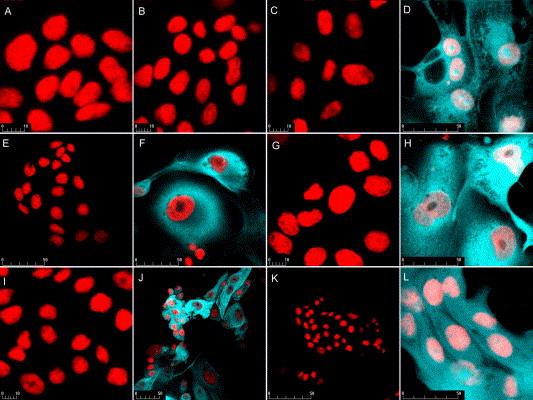Invasion of MDCK epithelial cells with altered expression of Rho GTPases by Trypanosoma cruzi amastigotes and metacyclic trypomastigotes of strains from the two major phylogenetic lineages |
| |
| Authors: | Fernandes Adriana B Mortara Renato A |
| |
| Affiliation: | Departamento de Microbiologia, Immunologia e Parasitologia, Escola Paulista de Medicina, Universidade Federal de São Paulo—UNIFESP, Rua Botucatu, 862 6th floor, 04023-062, São Paulo, SP, Brazil |
| |
| Abstract: | 
In order to invade mammalian cells, Trypanosoma cruzi infective forms cause distinct rearrangements of membrane and host cell cytoskeletal components. Rho GTPases have been shown to regulate three separate signal transduction pathways, linking plasma membrane receptors to the assembly of distinct actin filament structures. Here, we examined the role of Rho GTPases on the interaction between different T. cruzi infective forms of strains from the two major phylogenetic lineages with nonpolarized MDCK cells transfected with different Rho GTPase constructs. We compared the infectivity of amastigotes isolated from infected cells (intracellular amastigotes) with forms generated from the axenic differentiation of trypomastigotes (extracellular amastigotes), and also with metacyclic trypomastigotes. No detectable effect of GTPase expression was observed on metacyclic trypomastigote invasion and parasites of Y and CL (T. cruzi II) strains invaded to similar degrees all MDCK transfectants, and were more infective than either G or Tulahuen (T. cruzi I) strains. Intracellular amastigotes were complement sensitive and showed very low infectivity towards the different transfectants regardless of the parasite strain. Complement-resistant T. cruzi I extracellular amastigotes, especially of the G strain, were more infective than T. cruzi II parasites, particularly for the Rac1V12 constitutively active GTPase transfectant. The fact that in Rac1N17 dominant-negative cells, the invasion of G strain extracellular amastigotes was specifically inhibited suggested an important role for Rac1 in this process. |
| |
| Keywords: | |
| 本文献已被 ScienceDirect PubMed 等数据库收录! |
|

